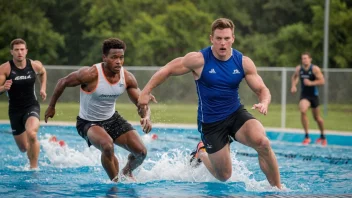Climate change is a pressing global issue that has wide-ranging effects on various aspects of life, including winter sports. As temperatures rise and snowfall patterns shift, athletes, enthusiasts, and industries connected to winter sports are facing unprecedented challenges. This article addresses some common questions surrounding the impact of climate change on winter sports.
How is climate change affecting snowfall in winter sports regions?
Climate change leads to altered precipitation patterns, which often results in reduced snowfall in many traditional winter sports regions. Warmer temperatures can cause precipitation to fall as rain instead of snow, impacting ski resorts and other winter sports venues.
What are the effects of rising temperatures on winter sports?
Rising temperatures can lead to shorter winter seasons, affecting everything from training schedules to competition availability. Athletes may find it increasingly challenging to train in natural snow conditions, impacting their preparation and performance.
Are certain winter sports more affected by climate change than others?
Yes, certain winter sports are more vulnerable to climate change. Skiing and snowboarding rely heavily on consistent snowfall and cold temperatures, making them particularly susceptible. In contrast, sports like ice skating may be less affected if indoor facilities can maintain ice through refrigeration.
What adaptations are being made in winter sports communities?
Winter sports communities are beginning to adapt through various means, such as investing in snow-making technology to supplement natural snowfall, adjusting competition schedules, and advocating for environmental policies that address climate change.
How does climate change impact athlete safety in winter sports?
With less predictable weather patterns, athletes may face increased risks from conditions such as icy surfaces or inadequate snow cover. This unpredictability can lead to a higher incidence of injury if proper precautions are not taken.
What can athletes do to prepare for the changes brought by climate change?
Athletes can focus on cross-training to maintain fitness levels during warmer months, advocate for sustainable practices within their communities, and stay informed about changing conditions in their sport to ensure they can adapt their training and competition strategies.
Is there any hope for the future of winter sports in a changing climate?
While climate change poses significant challenges, ongoing advancements in technology and a growing awareness of sustainability may offer pathways to mitigate its impact. Increased efforts in conservation and eco-friendly practices could help preserve winter sports for future generations.






